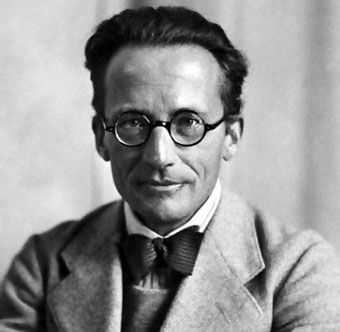How the physical model of atoms was lost
By the mid-1920s it was clear that “things” (electrons, atoms, molecules) long regarded as particles also show wave properties. This fact is the basis for the currently accepted theory of atomic structure. This theory, quantum mechanics, was introduced in 1925.
Its foundations were developed very rapidly during the next few years, primarily by Born, Heisenberg, Schrödinger, Bohr, Jordan, and Dirac. At first, the theory appeared in two different mathematical forms, proposed independently by Werner Heisenberg and Erwin Schrödinger.
Heisenberg provided the basis for quantum mechanics emphasizing the particle aspect of quantum objects, while Schrödinger emphasized the wave aspect. Since Schrödinger’s form of the theory is closer to the ideas of de Broglie, it is often referred to as wave mechanics. Eventually Schrödinger proved that in fact these two forms of quantum mechanics are equivalent, that is, different ways of expressing the same relationships. Schrödinger’s formulation is now predominant, although the symbols used in his equations are now interpreted differently from Schrödinger’s original usage.

Schrödinger sought to express the dual wave–particle nature of matter mathematically. Maxwell had formulated the electromagnetic theory of light in terms of a wave equation. Physicists were familiar with this theory and its applications. Schrödinger reasoned that the de Broglie waves associated with electrons could be described in a way analogous to the classical waves of light. Thus, there should be a wave equation that holds for matter waves, just as there is a wave equation for electromagnetic waves.
Schrödinger successfully derived an equation for the matter waves (de Broglie waves) that are associated with moving electrons. This equation, which has been named after him, defines the wave properties of electrons and also predicts particle-like behavior. The Schrödinger equation for an electron bound in an atom has a solution only when a constant in the equation has the whole-number values 1, 2, 3. . . . These numbers correspond to different energies. Thus, the Schrödinger equation predicts that only certain electron energies are possible in an atom.
In the hydrogen atom, for example, the single electron can be in only those states for which the energy of the electron has the numerical values
En = k22π2me2/n2h2
with n having only whole-number values. But these are just the energy values that are found experimentally, and just the ones given by the earlier Bohr theory! In addition, these states correspond to the picture of standing electron waves in the various stationary orbits.
In Schrödinger’s theory, these results follow directly from the mathematical formulation of the wave and particle nature of the electron. Bohr had to assume the existence of these stationary states at the start and make no assumptions about the allowable orbits. In Schrödinger’s theory, however, the stationary states and their energies are derived from the theory.
The new theory yields all the results of Bohr’s theory, with none of the Bohr theory’s inconsistent hypotheses. The new theory also accounts for certain experimental information for which Bohr’s theory failed to account. For instance, it allows one to compute the intensity of a spectral line, which is understood as the probability of an electron changing from one energy state to another.
After the unification of Schrödinger wave mechanics with Heisenberg’s formulation, quantum mechanics still contained the Schrödinger equation, but it not longer provided a physical model or visualizable picture of the atom. The planetary model of the atom has been given up and has not been replaced by another simple picture. There is now a highly successful mathematical model for the atom, but no easily visualized physical model.
The concepts used to build quantum mechanics are more abstract than those of the Bohr theory. But the mathematical theory of quantum mechanics is much more powerful than the Bohr theory in predicting and explaining phenomena. Many problems that were previously unsolvable were rapidly solved with quantum mechanics .
Physicists have learned that the world of atoms, electrons, and photons cannot be thought of in the same mechanical terms as the world of everyday experience. Instead, the study of atoms presents some fascinating new concepts. What has been lost in easy visualizability is made up for by an increase in fundamental understanding about nature at the most fundamental level.
Author: César Tomé López is a science writer and the editor of Mapping Ignorance
1 comment
quanticum quanticorum
http://abordodelottoneurath.blogspot.com.es/2009/03/toda-ciencia-trascendiendo-5.html